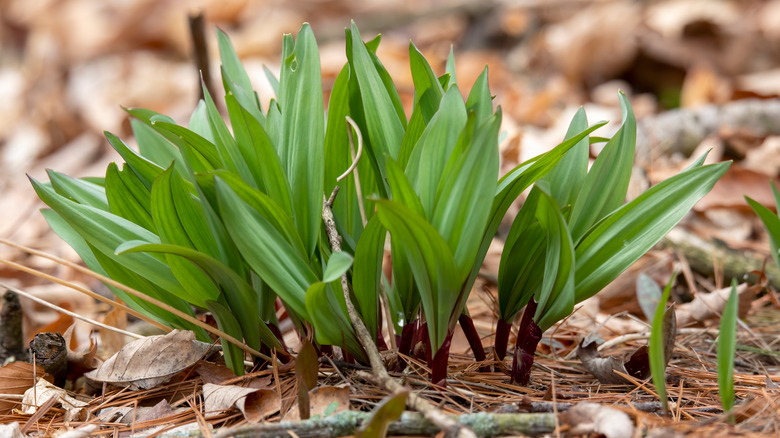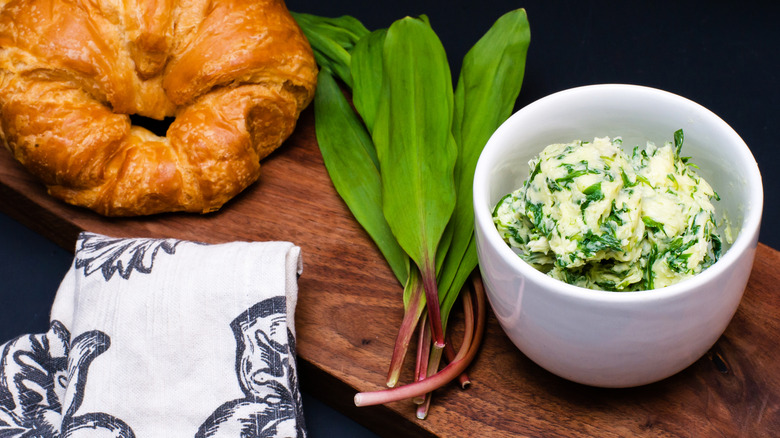Read This Before Foraging Ramps
Spring has ramped up from its initial faux wintry gloom into a warm blooded bloom, and with that change, ramp season has come. However, before you indulge in what Bon Appétit dubs "the Great Ramp Race," you should familiarize yourself with the sustainable way to harvest them. Otherwise, Québec's ban on harvesting over 50 bulbs at a time, as covered by Modern Farmer, will prove prudent.
That said, sustainably harvesting ramps is not that difficult if you know what you're doing. I-collective member Neftali Duran (an "autonomous group of Indigenous chefs, activists, herbalists, seed, and knowledge keepers" according to the I-collective website), told Serious Eats that one should only harvest the green ramp tops (not the bulbs) and always start at the center of a group, "so that the population stays strong."
The issue with most foragers is that they often pull the whole plant, roots and all, out from the same patch. If the roots are allowed to remain, though, the plant will continue to flourish. Similarly, harvesting the whole plant from the same spot year after year stops ramps from rejuvenating.
Russ Cohen, a wild foods advocate who spoke with Eater on the subject, also encourages fans to cultivate ramps at home. "The more that these plants are grown in gardens, the less we're hammering the wild populations," the expert explains. Cohen adds that if you do go foraging, you should only take one leaf from each plant — that way, the ramp will grow more leaves and you haven't hurt the environment.
Ramps are an annual hit
Ramps must be good if their foraging has reached a point that the government of Québec had to partially ban the act (as Modern Farmer notes), spawning a black market.
Reportedly, ramps, which are also sometimes referred to as wild garlic, actually are that good. In an attempt to highlight why people love the plant so much, Epicurious asked Sheri Castle, author of "The New Southern Garden Cookbook," to describe the taste. The author exclaimed that, like water, language could not pinpoint the distinct flavor of ramps, but settled for saying that the alliums have "the sweetness of a leek, with a strong pungency you'd find in garlic."
Ramps can be used in most recipes as an onion or leek replacement. Alternatively, they can be delicious grilled and eaten on their own. Epicurious offers further uses, suggesting pickling, pesto, and compound butter. Now that you have some recipe inspiration, be sure to harvest sustainably to keep your ramp supply healthy for years to come.

